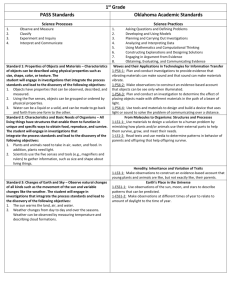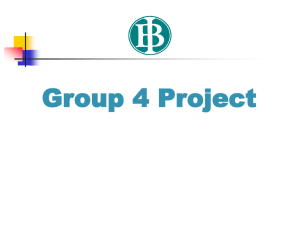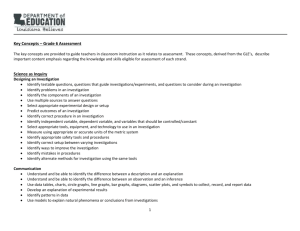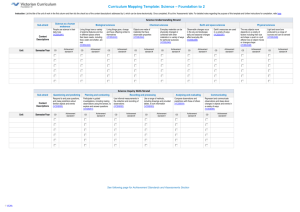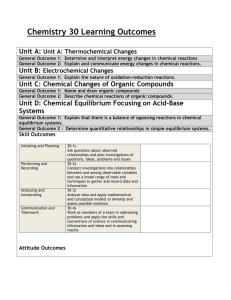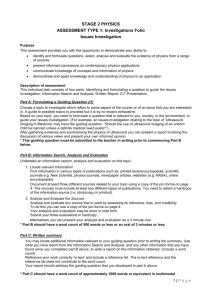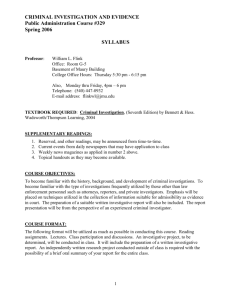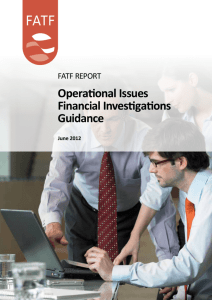7.1
advertisement
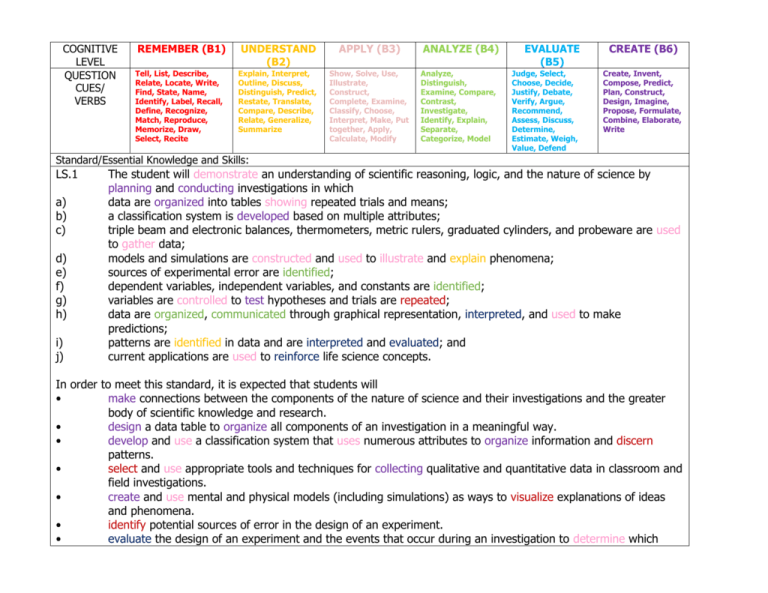
COGNITIVE LEVEL QUESTION CUES/ VERBS REMEMBER (B1) Tell, List, Describe, Relate, Locate, Write, Find, State, Name, Identify, Label, Recall, Define, Recognize, Match, Reproduce, Memorize, Draw, Select, Recite UNDERSTAND (B2) APPLY (B3) Explain, Interpret, Outline, Discuss, Distinguish, Predict, Restate, Translate, Compare, Describe, Relate, Generalize, Summarize Show, Solve, Use, Illustrate, Construct, Complete, Examine, Classify, Choose, Interpret, Make, Put together, Apply, Calculate, Modify ANALYZE (B4) Analyze, Distinguish, Examine, Compare, Contrast, Investigate, Identify, Explain, Separate, Categorize, Model EVALUATE (B5) Judge, Select, Choose, Decide, Justify, Debate, Verify, Argue, Recommend, Assess, Discuss, Determine, Estimate, Weigh, Value, Defend CREATE (B6) Create, Invent, Compose, Predict, Plan, Construct, Design, Imagine, Propose, Formulate, Combine, Elaborate, Write Standard/Essential Knowledge and Skills: LS.1 a) b) c) d) e) f) g) h) i) j) The student will demonstrate an understanding of scientific reasoning, logic, and the nature of science by planning and conducting investigations in which data are organized into tables showing repeated trials and means; a classification system is developed based on multiple attributes; triple beam and electronic balances, thermometers, metric rulers, graduated cylinders, and probeware are used to gather data; models and simulations are constructed and used to illustrate and explain phenomena; sources of experimental error are identified; dependent variables, independent variables, and constants are identified; variables are controlled to test hypotheses and trials are repeated; data are organized, communicated through graphical representation, interpreted, and used to make predictions; patterns are identified in data and are interpreted and evaluated; and current applications are used to reinforce life science concepts. In order to meet this standard, it is expected that students will • make connections between the components of the nature of science and their investigations and the greater body of scientific knowledge and research. • design a data table to organize all components of an investigation in a meaningful way. • develop and use a classification system that uses numerous attributes to organize information and discern patterns. • select and use appropriate tools and techniques for collecting qualitative and quantitative data in classroom and field investigations. • create and use mental and physical models (including simulations) as ways to visualize explanations of ideas and phenomena. • identify potential sources of error in the design of an experiment. • evaluate the design of an experiment and the events that occur during an investigation to determine which • • • • • • factors may affect the results of the experiment. This requires students to examine the experimental procedure and decide where or if they have made mistakes. identify what is deliberately changed in the experiment and what is to be measured as the dependent variable. analyze the variables in an experiment and decide which ones must be held constant (not allowed to change) in order for the investigation to represent a fair test. This requires students to comprehend what “variables” are and to apply that idea in new situations related to the Life Science Standards of Learning concepts. determine the specific component of an experiment to be changed as an independent variable and control the experiment by conducting trials for the experiment in which the independent variable is not applied. This requires the student to set up a standard to which the experimental results can be compared. The student must use the results of the controlled trials to determine whether the hypothesized results were indeed due to the independent variable. construct appropriate graphs, using data sets from investigations. This requires the student to recognize that a line graph is most appropriate for reporting continuous or real-time data. This also requires a student to comprehend that points along the line that are not actual data points can be used to make predictions. Students should be able to interpret and analyze these graphs. distinguish between observational and experimental investigations. develop conclusions based on a data set and verify whether the data set truly supports the conclusion. This requires students to cite references to the data that specifically support their conclusions. Vocabulary: scientific reasoning, logic, nature of science, investigation, data, trials, means, classification, attributes, triple beam balance, electronic balance, thermometer, metric ruler, graduated cylinders, probeware, models, simulations, phenomena, experimental error, dependent variable, independent variable, constants, hypotheses, predictions, patterns, qualitative data, quantitative data, field investigations, models, simulations, mental models, potential sources of error, controlled trials, hypothesized results, graphs, line graph, real-time data, data points, observational investigations, experimental investigations, conclusions, references Assessment Type and Cognitive Level: Formative: Homework Assignments: Monday Tuesday Summative: Wednesday Thursday Friday MONDAY TUESDAY WEDNESDAY THURSDAY FRIDAY ------------------------- ------------------------ ----------------------- --------------------- ----------------------- ------------------------- ------------------------ ----------------------- --------------------- ----------------------- ------------------------- ------------------------ ----------------------- --------------------- ----------------------- Closure Differentiation (Above, On, and/or Below Grade Level) Learning Plan, Activities, Planned Questions (Include time allotted to specific activities) Hook/ Essential Question DATE A O B Reflection



